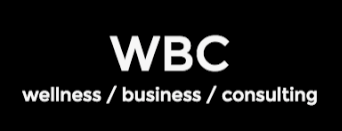Podcasts provide a wealth of information on a variety of topics. When it comes to business, a growing number of entrepreneurs and executives are turning to podcasts as a useful source for new insights and tips. With so many business podcasts out there, having enough time to weed through them and identify the most beneficial isn’t always possible, which is why we asked 15 members of Young Entrepreneur Council (YEC) the following:
Top Business Tips from Podcasters
Here’s what YEC community members had to say:
1. Hire Passion
“The saying goes that a passionate person is better than forty that are merely interested. When hiring people or choosing a partner to work with, make sure they are really passionate about the line of work they are getting into. If they are, then they will motivate themselves. Don’t hire people that just “want a job” or partner with somebody that isn’t going to be as committed as you are.” ~ Andy Karuza, FenSens
2. Grow Ten Times
“The Grant Cardone podcast, “Cardone Zone“, I listen to almost daily. The most valuable tip he delivers over and over again is to aim to grow your business 10 times each year, delivering 10 times more than your competitors to your clients. With this goal in mind, you inevitably deliver at least 30 percent more in returns. At each level of the buyer journey, you are offering so much more than your competitors.” ~ Matthew Capala, Search Decoder
3. Skip PR
“PR has been this long-standing strategy to use, but when I heard a podcast about the death of the press release and why I didn’t have to use an expensive PR agency to get noticed, it helped me refocus my marketing efforts and do so much more with less money. I realized it was a waste of time and money.” ~ John Rampton, Calendar
4. Do What Works Best for Your Personality
“On Neil Patel’s podcast he talked about sticking to the mediums that you are best at and do more of that. When you are first starting out with content creation, you can easily get overwhelmed with all the different channels. For example, should you blog or vlog? He suggested picking one strategy that you naturally love and focus on developing that really well first, before expanding.” ~ Syed Balkhi, OptinMonster
5. Biohack Your Life
“As a serial entrepreneur, the demands on my time and attention are great. Surprisingly, the most interesting business tip I got was from the “Bulletproof Podcast” with Dave Asprey, where he talks about biohacking and maximizing your health, energy, and mental clarity. Using biohacking, I’ve been able to improve my focus and ability to manage multiple businesses and stay focused and effective.” ~ Marcela De Vivo, Brilliance
6. Don’t Despair Over a Lack of MBA
“I’ve listened to countless episodes of NPR’s “How I Built This” and one common thread that I’ve noticed is that most of the entrepreneurs that they’ve interviewed are just regular people who don’t have an MBA or experience in building a massive company. They worked hard and learned along the way.” ~ Rachel Beider, Massage Greenpoint, Massage Williamsburg
7. Invest Old Money to Get New Money
“This advice came from Grant Cardone. We are taught to save our money and conserve. His advice is to keep the flow going and invest into ways to get new money coming in, rather than horde the existing money. I have used this strategy and seen my business grow month after month because I am investing into getting new customers and reach. You sometimes do have to spend some money to make more.” ~ Richard Fong, Bliss Drive
8. Build a Sports Team, Not a Family
“In an episode of “The Twenty Minute VC“, Ari Mir, founder of Clutter, explains how it’s important to approach hiring and culture building as if you’re building a sports team instead of a family. In sports, you’re strategically placing the best players for particular positions at that period in time. If you can do this well as a coach, your team will attract the best talent and thrive off of success.” ~ Ben Larson, Gateway
9. Incorporate Many Great Ideas Into Your Work
“I was listening to a recent episode of “Pod Save America” that featured several of the architects of the 2010 healthcare overhaul. They agreed that the reason Obamacare will endure is that they actually included so many amendments from all across the political spectrum. The great lesson to me was: You have to incorporate a wide range of great ideas into your work if you want it to endure.” ~ Paul Grossinger, Gaingels
10. Hire Barrels, Not Bullets
“On the “Startup School” podcast, Keith Rabois talked about hiring great people who can do hard work. He calls those bullets (you can direct them at a target). But he pointed out that you also need to hire “barrels,” the folks who help direct those bullets. These are two very different skill sets, and having them both is critical to a company’s success. Talent without the proper focus is wasted.” ~ Aaron Schwartz, Modify Watches
11. Track Your Time
“I’d always been dubious about the benefits of time tracking, but when CGP Grey and Myke Hurley discussed it on the “Cortex” podcast, I decided to give it a go. I was amazed how little of the day I spent on productive work. The data informed how I plan my day for maximum productivity. If you haven’t tried tracking your time, I’d strongly recommend you try it for a week; you may be surprised.” ~ Vik Patel, Future Hosting
12. Do What’s Unfamiliar, Even for Fun
“There’s a great episode of Tim Ferriss’s podcast where he interviews Mike Rowe about how he got his start in television. Mike’s candor, his rebelliousness and willingness to do what was unfamiliar to him, led him to a rewarding and satisfying career in an industry he never anticipated being involved in. Sometimes doing something unusual can lead us to our normalcy.” ~ Blair Thomas, eMerchantBroker
13. Go Whale Hunting
“One of the best lessons I learned was, “spend two hours a week chasing whales.” Ken Courtright’s podcasttalked about this a year back and it has paid off 100 percent! By whale hunting, Ken means to spend two hours a week at minimum chasing clients that are Fortune 500 or Fortune 100 companies. I have been doing this for a year and landed two accounts I never thought would be possible. Those two clients doubled my yearly revenue.” ~ Chad Keller, Eyeflow
14. Plan Your Schedule in Minute Increments
“A podcast once recommended to plan your day in minutes rather than hours or half hour blocks. If possible, do 10- or 15-minute meetings, not everything needs to be a full half hour or hour. Your time is the most valuable asset and it needs to be given with the most care.” ~ Adelyn Zhou, TOPBOTS
15. Know How the Political and Market Climate Impacts You
“It is easy to become absorbed in metrics, growth, and minutiae relating only to your business. With the instability of the economy and the political climate, modern founders and entrepreneurs much know what is happening the world around them at a macro level. Legislative and interest rate risk is real — follow it and know how it impacts you. Ostriches are no good at planning ahead.” ~ Ryan Bradley, Koester & Bradley, LLP
Article from SmallBizTrends











